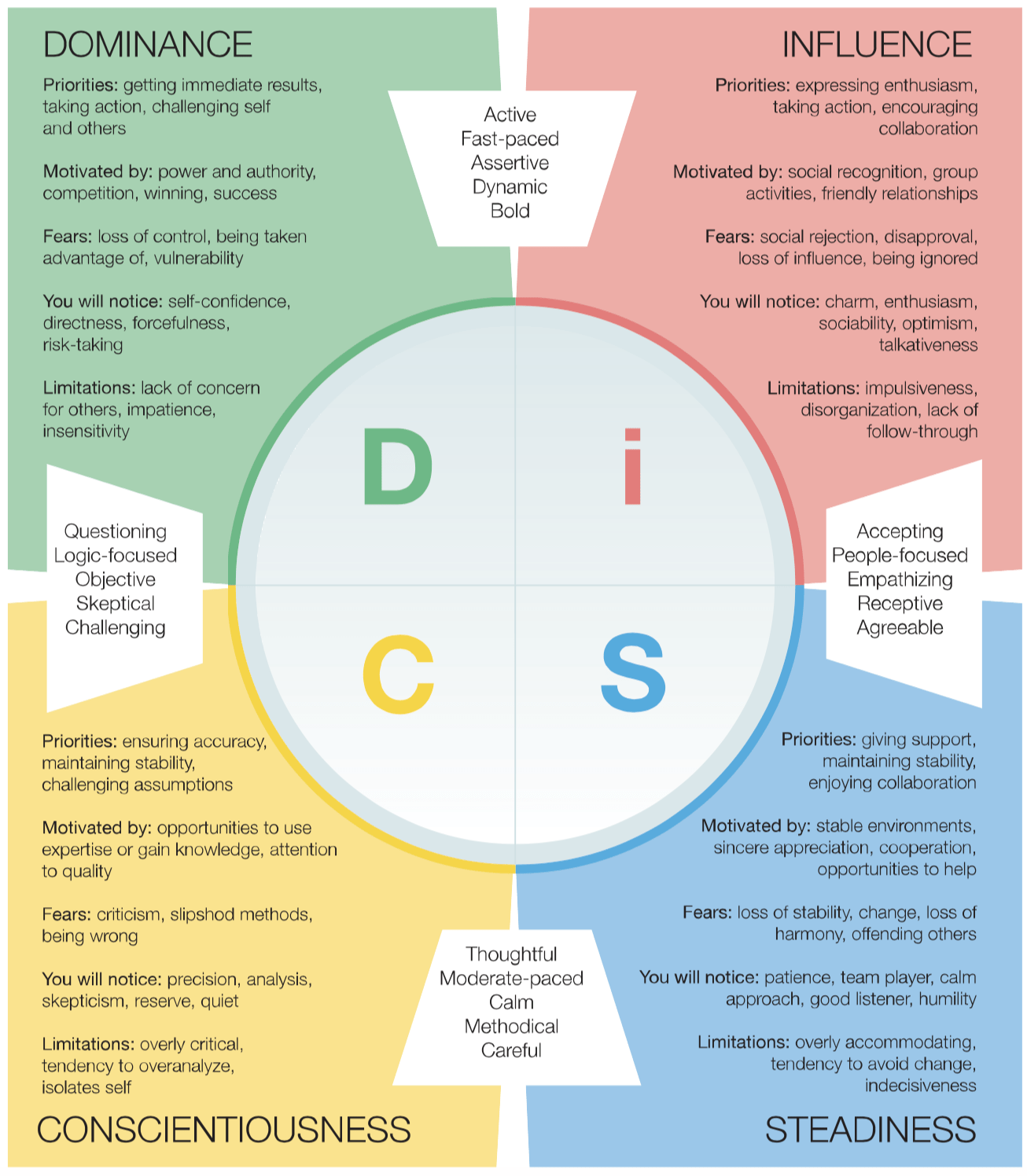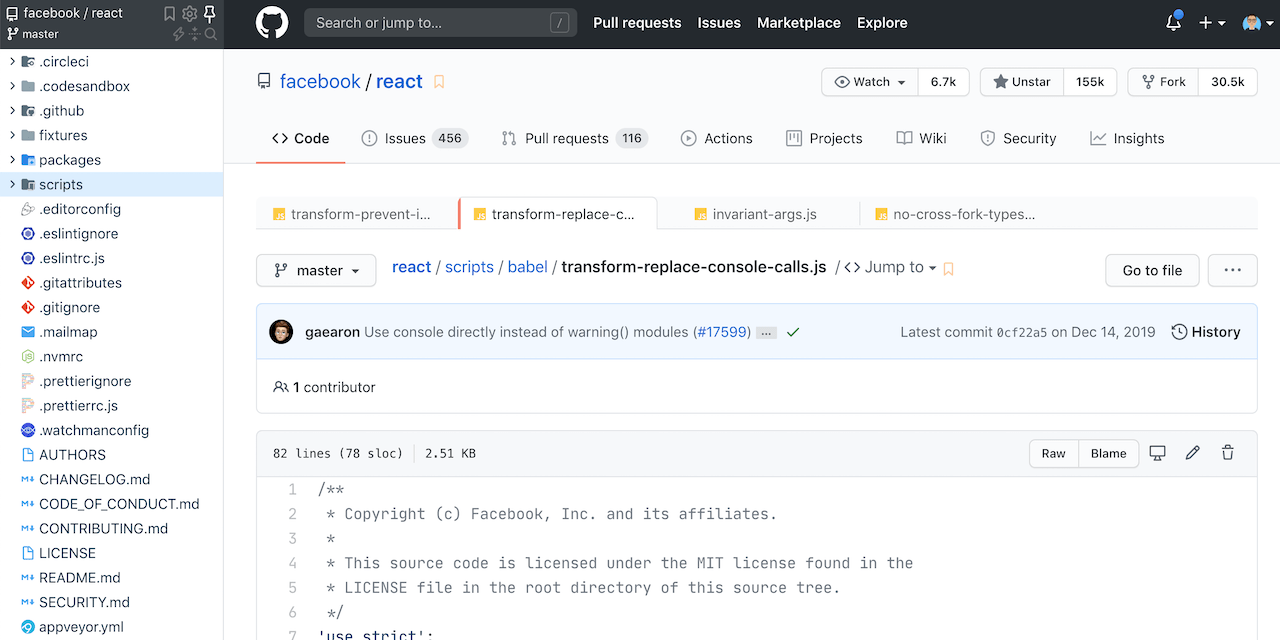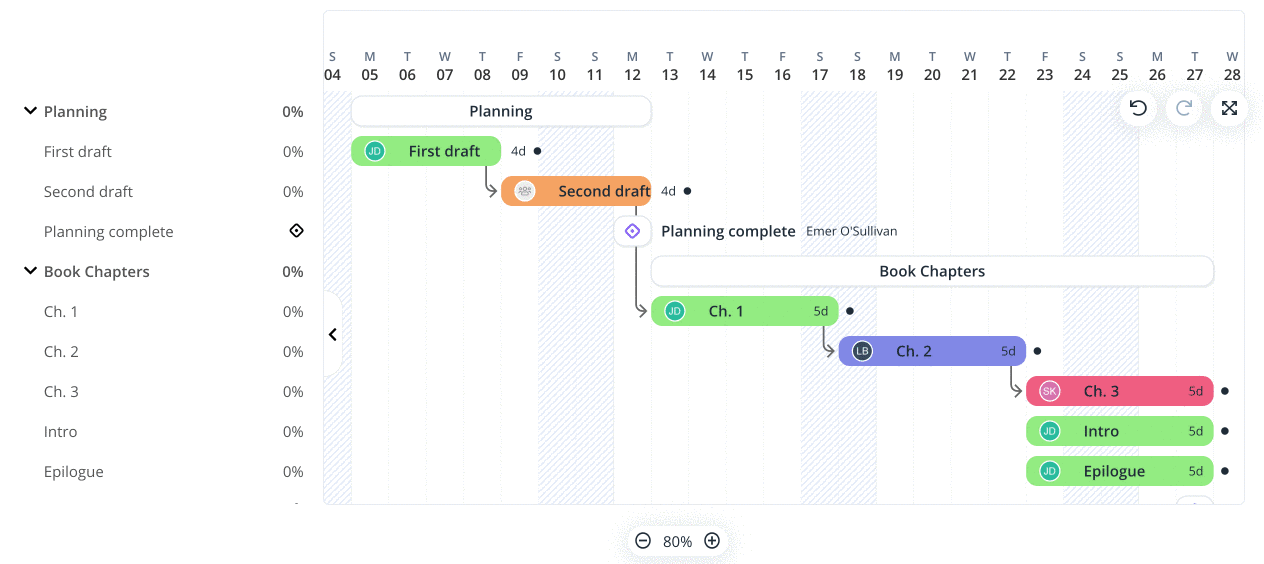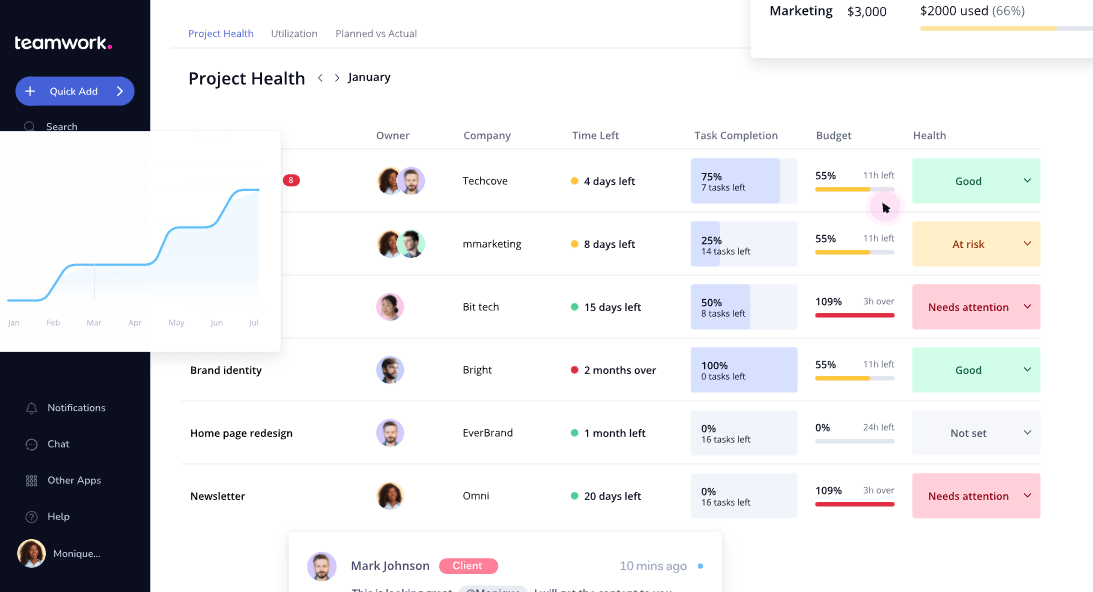How to Manage a Technical Development Team Remotely

- Summary
- Effectively Managing Development Teams in Different Timezones
- Hiring: How to Screen Candidates When Hiring For Your Remote Development Team
- Working: Taking the Right Approach to Development Projects as a Team
- Our Typical To-Do List for Effective Remote Team Management
- Manage Your Remote Technical Development Team Efficiently with O8
The working landscape has significantly changed in recent years. Today, you’ll find marketing and development teams halfway across the world collaborating on the same projects - this is the state of work, and businesses must embrace it.
At O8, we're a global workforce with more than just c-level talent. We have a lead architect in Malaysia, a client experience lead in Idaho, a developer in Ukraine, and a website designer in Canada with our headquarters in Minneapolis.
While 66 percent of remote teams say they’re more productive working remotely as opposed to working from their offices, this style of work isn't for everyone. If you’re reading this post, you’ve probably figured that out too. So what's the best way to efficiently manage a remote development team? While simple, in theory, you’ll find that not all remote teams are well-oiled machines.
Today, we’ll share tips on how to effectively manage your technical development team, leapfrog remote work challenges, and find the best structure and talent to excel. In the process, we will discuss some of the same techniques we use in managing our fractional development teams here at O8. Ready? Let’s dive in.
Effectively Managing Development Teams in Different Timezones
One mistake many business owners make is thinking that effective management starts once they have a team. But, by then, you’ve already decided on who you’re working with, without great scrutiny into whether or not they’re the right people halfway across the world you want to put in charge of your work.
Effective management begins from the hiring stage. Here’s what that means.
Hiring: How to Screen Candidates When Hiring For Your Remote Development Team
If you can get the right people from the start, you’ll have an easier time getting them to replicate your work standards. After all, you don’t want to hire remote workers if you’ll have to micromanage them. That’s just too much work.
We help several businesses put together teams that hit the ground running. Here’s how:
1. Establish Your Ideal Remote Worker Persona
The barrier to entry into the remote work world is rather low. That’s why it’s not surprising that 22 percent of the total American workforce will work remotely by 2025.
But, not all of these people are cut out for remote work. More importantly, not every remote software developer will fit your work style. So, how do you find the right people for your remote software development team?
You need an ideal remote worker persona. Essentially, you’re answering the question of:
-
Who can thrive in your dev team?
-
What qualities are required to succeed in your dev team?
-
Who is not an ideal person for the job?
These questions help you shortlist your candidates before they even apply for the job. If you’re on the fence about what qualities you need from your ideal remote worker, you can look at what works for technical web development teams like yours and make a list.
From experience, we know that the best remote workers have these qualities:
They Are Enterprising
If you’re looking to put together an A-team, you need go-getters. People who are proactive about their work and have a way of getting things done beforehand.
They Are Great Communicators
The foundation of every remote work setup is communication. Since you're no longer in the face-to-face work environment, you'll have to keep tabs on the different working parts of your team through constant communication.
If a candidate struggles to communicate during your first meeting, whether by text messaging or video conferencing, there's a high chance they'll have a hard time in a remote or fractional development team.
When it comes to effective communication in remote work, there's another element besides clear and concise messaging. That's the ability to use communication channels. Remote work requires several tools like Zoom, Slack, Trello, and Teamwork, essentially any communication tools where you can monitor your team's progress.
You need people who are adept with these tools. This way, you don't have to spend time training new hires to be conversant with your communication tools.
They Are Experienced
The more experienced your hire is, the more likely they are to hit the ground running. After all, they’ve clocked plenty of working hours on a project like yours and know what it takes to get the job done.
Inexperienced hires need to find their way around and build systems and workflows to streamline their development process. This can be challenging; you might not need that on your team.
Of course, it can be hard to identify great remote workers for your dev team solely from these qualities. In that case, here are some questions we use to work out who’s best for our dev teams.
-
What would you do if you were on the phone with a client and didn’t know the answer to a question?
-
What type of projects have you worked on?
-
You have five dev tasks (preferably list the tasks) to complete, but you can only realistically finish 4 in time. Which ones are you tackling first?
-
Walk me through your work process for developing a project management tool for graphic designers.
-
Where do you see yourself in five years?
These questions give you a peek at your candidate’s mind before deciding. Once you’ve got your ideal employee, it’s time to post your job out there.
2. Create a detailed job description
You need an unambiguous job description that describes your open position in the best way possible.
Instead of looking for a tech talent or an in-house programmer, it’s best to put out the granular details so candidates can decide whether they’re a good fit. For instance, you can say you’re looking for an interactive web app developer for your marketing agency—someone who can ......... (list the roles and responsibilities).
If we were looking to hire someone here at O8, here’s the job description we’d put out.
Senior Software Developer (Example)
Job brief
O8 is looking for a Software Developer to build and implement functional programs. You will collaborate with our CTO, other developers, and product managers throughout the whole software development life cycle.
You should be a team player in this position with excellent attention to detail and problem-solving abilities. We'd like to meet you if you have experience with Agile frameworks and popular development languages (for example, JavaScript).
Responsibilities
-
Producing clean, efficient code based on specifications
-
Testing and deploying programs and systems
-
Work with developers to design algorithms and flowcharts
-
Troubleshoot, debug and upgrade existing software
-
Create technical documentation for reference and reporting
Requirements and skills
-
Proven experience as a Software Developer, Software Engineer, or similar role
-
Familiarity with agile development methodologies
-
Experience with software design and development in a test-driven environment
-
Knowledge of coding languages (e.g. C++, Java, JavaScript) and frameworks/systems (e.g. AngularJS, Git)
-
Experience with databases and Object-Relational Mapping (ORM) frameworks (e.g. Hibernate)
-
Ability to learn new languages and technologies
-
Excellent communication skills
What this opportunity offers
-
Bonuses available based on performance
-
10 days of PTO
-
Paid Holidays
-
Medical/Dental 99% Paid
-
401K + Employer Match
With a job description like this, you sieve your ideal candidate from the many people looking for a job and make a case for your company.
On a broader level, every job description should include:
-
the role name
-
a summary of the role
-
responsibilities
-
company culture
-
mode of contact
-
qualifications for the role
Without information like this, you leave your mail open to irrelevant applicants who’ll only waste your time.
3. Get promising candidates on a screening call
Once you start receiving applications, it’s time to trim some fat. Make a shortlist of the best applicants - those who match your job description or are a close fit for your ideal remote software developer.
Next, schedule a screening call with them. This is where you evaluate your top candidates on a microscopic level, get to know their personalities, and verify if they’re a great fit for your team.
Of course, it’s not an in-person interview, but since you’ll be working with distributed teams anyway, you might as well test the candidate’s availability with video calls and regular meetings.
You can use Zoom or Skype to schedule a short meeting if you’re looking for a free option for video conferencing. Just remember to send the Zoom link beforehand, so your shortlisted candidates know it’s time for the meeting.
Once you’ve assessed their capabilities and settled on a winner, you can proceed to onboard them.
Working: Taking the Right Approach to Development Projects as a Team
Now, you have your remote team of developers. How do you get them from “meh“ remote employees to a successful remote team?
1. Use DISC
DISC is a personality assessment that helps organizations better understand a prospect’s personality and disposition. You can leverage this information to manage your new hires more efficiently. How?
With the various DISC personalities, you know who to assign what task to and how to handle your new hires. You get a 20-page report on your employees’ stressors, priorities, likes, and motivators. Here’s an overview of the information you get from DISC:

From this report, it’s quite easy to determine who’s the dominant character in your team and who’s the influential one. This way, you know who to put in charge of that iteration or sprint.
2. Go agile
Instead of developing a whole project at once, your team takes different parts at a time, works on them, and assesses them before moving on to the next one. More practically, you’ll be creating a website, for instance, one page at a time.
This ensures that you work more efficiently and produce an inch-perfect product at the end of your project. What’s more, you get more feedback on your product than when you launch it out there and wait for customers to slam it down.
We love using this scrum methodology with our development teams as it helps us:
-
Prioritize people over tools and work procedures
-
Present value-packed software over documentation
-
Prioritize efficiency over project speed
It’s important to remember that the agile methodology works best for a technical development team when you break down the whole project into smaller tasks. This way, it’s easier for the team members to identify the more important tasks, prioritize them, and knock them out of the park.
While the agile methodology helps minimize time wasting and increases efficiency, you shouldn’t leave anything to chance. That’s why we also implement a peer code review system to monitor our work.
3. Use a peer code review system
Even the best programmers can sometimes skip a few lines of code - there’s no shame in admitting that. But if you’re looking to run a top team, you’ll have to minimize these mistakes and ensure your codes and software run smoothly.
That’s where code review comes in. Code reviews help eliminate bugs in your code, increase your code’s efficiency, and keep it up to regulation.
To be honest, finding bugs in your own program can be difficult. After all, you wrote the code yourself; it’s stuck in your mind.
At O8, we’ve taken a slightly different approach to code review, so our developers don’t skim over bugs in their code. Instead of combing through your own maze of code, we let another programmer on the team do it.
This method of reviewing code helps your remote developers learn from each other and be confident in their ability to code and catch code mistakes. More importantly, it helps glue the whole team together.
You can get code review tools to assist you in the review process. These tools help you be more efficient in your reviews. An example of one such tool is Github.
GitHub gives authorized users access to software codes so they can assign pull requests and review codes as they see fit.

If you already use GitHub to build your projects, reviewing that code on the platform should be fairly easy for you. And even if you don’t, you can always sign up and start reviewing.
The paid plan goes for $7 a month, a small price to pay for top-quality reviews if you ask us.
4. Implement operational alignment
The concept of operational alignment is simple: make sure your resources (code, in this case), partners (remote developers), revenue, and cost model align with your market expectations.
You need every one of your remote workers aligned with your team's vision to be successful. If you can share this vision with the group, you automatically increase the chances of success of your team.
But how do you go about that?
One way to do that is by clearing defining individual and team expectations. Let your developers know where you are, where you want to get to, and how you plan on getting there. Next, you need to increase remote employee engagement around these goals, so they're all onboard (that's why onboarding the right way is important).
You can also leverage data-driven dashboards like the ones in Teamwork to monitor performance and fill in the gaps between your developer's performance and your team's goals. Here's an example:

Another way to ensure operational alignment is through regular meetings. These meetings help your remote developers share updates on what they're working on and discuss ideas for improving the current work processes or troubleshooting specific problems.
As a best practice, we also keep minutes of these meetings so we can share them with our developers later. We usually repurpose these minutes into to-do lists.
5. Have structured communication
Structured communication means clearly outlining your organization’s communication systems to improve efficiency and eliminate the uncertainty. In fact, without meaning to, most remote workers resort to structured communication when faced with an unclear problem.
Say a developer on your team doesn’t know who to seek permission from when they have to go on sick leave, who do you think they’ll ask? The manager. This de-factor assumption is a structure in itself. The manager is in charge of running the organization, so the developer can report to them.
This manager fallback may not be a problem in a small remote team of 10 people. But, scale that number to 100, and suddenly the manager has too many challenges to handle.
With structured communication, your employees always know who to communicate with. Of course, there’s more to it. It helps clarify information, makes for smoother collaboration, improves organization, and supports effective decision-making.
One way you can structure your communication is to adopt a single channel of communication. At O8, for example, we use a Slack channel that houses all our information/discussions, making it easier for our team to find what they need. We take it a step further by creating different sub-channels for all relevant sections of communications.
And O8 isn’t the one company that finds communication like this as effective - so does Kiva and thousands of other businesses. In fact, the Vice President of Investments at Kiva, Kathy Guis, mentions that
“With so many moving parts—global staff, a partner network of 300 organizations, millions of microtransactions and borrowers—emails and one-off chat tools weren’t getting the job done. Now, we use Slack all day, every day. Creating that powerful space for efficient asynchronous communication has been integral to transforming our organization.“
Truthfully, there are countless possibilities with Slack. For example, you can repurpose your main Slack channel into a table of contents, where you turn each new (important) information into a thread instead of allowing comments after every post.
This way, your remote team members and dev leaders can keep their fingers on the pulse. All they have to do is tap the designated thread and access the information they want.
6. Build workflows
Technical development teams thrive on workflows, especially remote teams. So, it’s unsurprising that many big-name companies have preset workflows in their stack. Case in point, Apple.
Apple is an authoritative company in the tech world. It has over 147,000 employees, some working remotely while others work in-office. With this sheer number of employees, it’s easy for standards to be lowered or lost in the trenches - something a company like Apple can’t have.
That’s why Apple has many workflows to help maintain standards and peak performances. An example is Universal Apps.
Universal apps allow Apple developers to create consistent app experiences on all iPadOS, macOS, and iOS devices. Now, developers can create one app and optimize it for the iPhone, iPad, and Mac instead of building different apps for these platforms. This way, Apple saves time, and resources, and maintains less stressed developers.
That’s the power of workflows. They help you streamline routine processes and improve the way you work together as a team - they give structure to your working processes.
The point? Build processes and systems that you can onboard the right technical developers into.
7. Leverage project management tools
57 percent of project managers say that project management tools have helped them improve the quality of their final products. This speaks of the importance of project management tools to a remote dev team - and truthfully, it’s difficult managing a team without these tools.
Project management tools help put your team and processes in one place so you can manage them easily. With this perk, you’d think many software development teams have project management tools in their stack - far from true.
Wellington reveals that only 1 out of 4 teams actually use any project management tool. These companies rely on fragmented communication scattered across several platforms. The result?
For one, these teams can’t track key performance indicators effectively. Additionally, teams that operate without project management tools are often confused and have duplicated efforts in their processes. It doesn’t have to be this way.
Investing in a project management tool like Teamwork eliminates all these hurdles.

8. Have a reward system
Every employee likes a good reward - your remote dev team members are no different. Rewards motivate them to work even harder on attaining company goals, increasing your team’s productivity. In fact, Gartner claims that a good reward system increases team members’ productivity by 11.1 percent.
Now, how do you reward your technical development team when they’re in different parts of the globe? Here are a few ideas to set you up:
-
You can upgrade your team members’ workplace through annual tech allowances.
-
Ship out goodies to their remote locations to celebrate big achievements.
-
Give out gift cards or vouchers to reward small wins.
-
Feature top-performing remote workers in your company newsletter.
-
Give upskilling opportunities to team members that hit monthly goals.
The best part about this? You don’t have to invest so much time in creating an employee reward system. Simply find an employee recognition software to help streamline the process.
A few examples of this employee recognition software include:
-
Bonusly
-
Vantage Circle
-
Guusto
-
Fond
-
Awardco
-
Kudos
-
HeyTaco
These tools require little to no technical knowledge, so anyone can sign up and create a top-notch reward system for their team. This way, you’re improving productivity while leaving a lasting impression.
Our Typical To-Do List for Effective Remote Team Management
We believe by now you’ve learned how to effectively manage your remote development team. But we know all this information still feels very much theoretical. To make it more practical, we’re revealing our To-Do list for managing remote teams effectively.
You can steal it for your team or study it to create one for your team - up to you. Here’s what our to-do list looks like:
Daily
-
Temperature Check: Essentially, finding out how your team is doing on an individual level. Are they stressed? Are they feeling good?
-
Monitor Tasks: Know what your team members are working on and when they need to turn work in. What are the priorities, and what should they be working on?
-
Time Available for Contact: Communicate that you’re available for a chat should they need to talk about anything. Give specific times so you can talk to your remote team members without sacrificing quality personal time.
Weekly
-
Team Meeting: This can be an asynchronous meeting where you’re just sharing information with the team or an online stand-up meeting set up where you throw ideas around on a project. Do this at least once a week so everybody’s caught up.
-
Casual Chat: Not all meetings have to be formal, matter-of-fact, client-oriented meetings. Sometimes, your team members just need someone to chat with. Make time for conversations, and you’ll see that communication becomes more fluid.
Monthly
1-on-1 Check-Ins: Schedule 1-on-1s at least once a month where you can talk to team members more personally, discuss individual progress reports, and simply show your team members that you see them.
Culture Activity: If you have a company culture activity, it’s best to slide this in sometime in the month.
Quarterly
Performance Review: You need to conduct a performance review to determine the progress in the year, what’s working, what’s not, and how you can improve performance in the next quarter.
Re-establish KPIs and OKRs: Have your goals changed over the course of the quarter? Now’s the time to reset your objectives and key results, so everyone’s still on board with your vision.
Manage Your Remote Technical Development Team Efficiently with O8
We’ve sworn by these principles and our to-do list so it’s no surprise that we can easily put together remote teams that win. Hopefully, with these tips and our to-do list, you can do the same too.
Of course, we understand that not everyone would want to manage a remote team on their own. It can be time-consuming and unpredictable. Plus, you don’t always have projects to work on.
That’s why the most successful businesses use fractional development teams for their software dev projects. It’s like Luc, CEO of Luciano Viterale, says
The nature of agencies is that they go through busy and slow cycles. Project work can also be unpredictable. This is why remote and fractional dev teams are key. You can leverage dev talent when you need it but not have them sit around doing nothing when you’re not as busy.
Want a self-managing, expert-level dev team that scales and adjusts to your web development needs at a fractional cost? Get in touch with the O8 fractional development team today and see how we can help.

